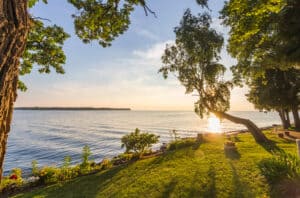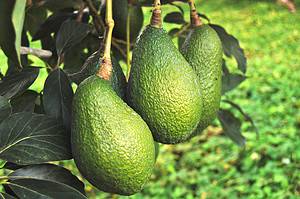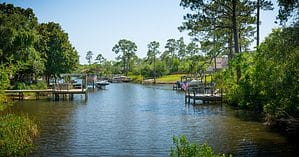Hilton Head Island is a premier vacation destination in Beaufort County, South Carolina. Visitors flock to Hilton Head for its luxury resorts, 12 miles of Atlantic beachfront, golf courses, shopping, and wildlife. The island is also a natural haven for wildlife, including the American alligator (Alligator mississippiensis). Locals in Hilton Head are pretty accustomed to the 2,000 to 4,000 resident gators, which often cross roads, sunbathe in lagoons, and even wander through backyards. Keep reading to discover the best spots to see alligators in Hilton Head!
1. Jarvis Creek Park
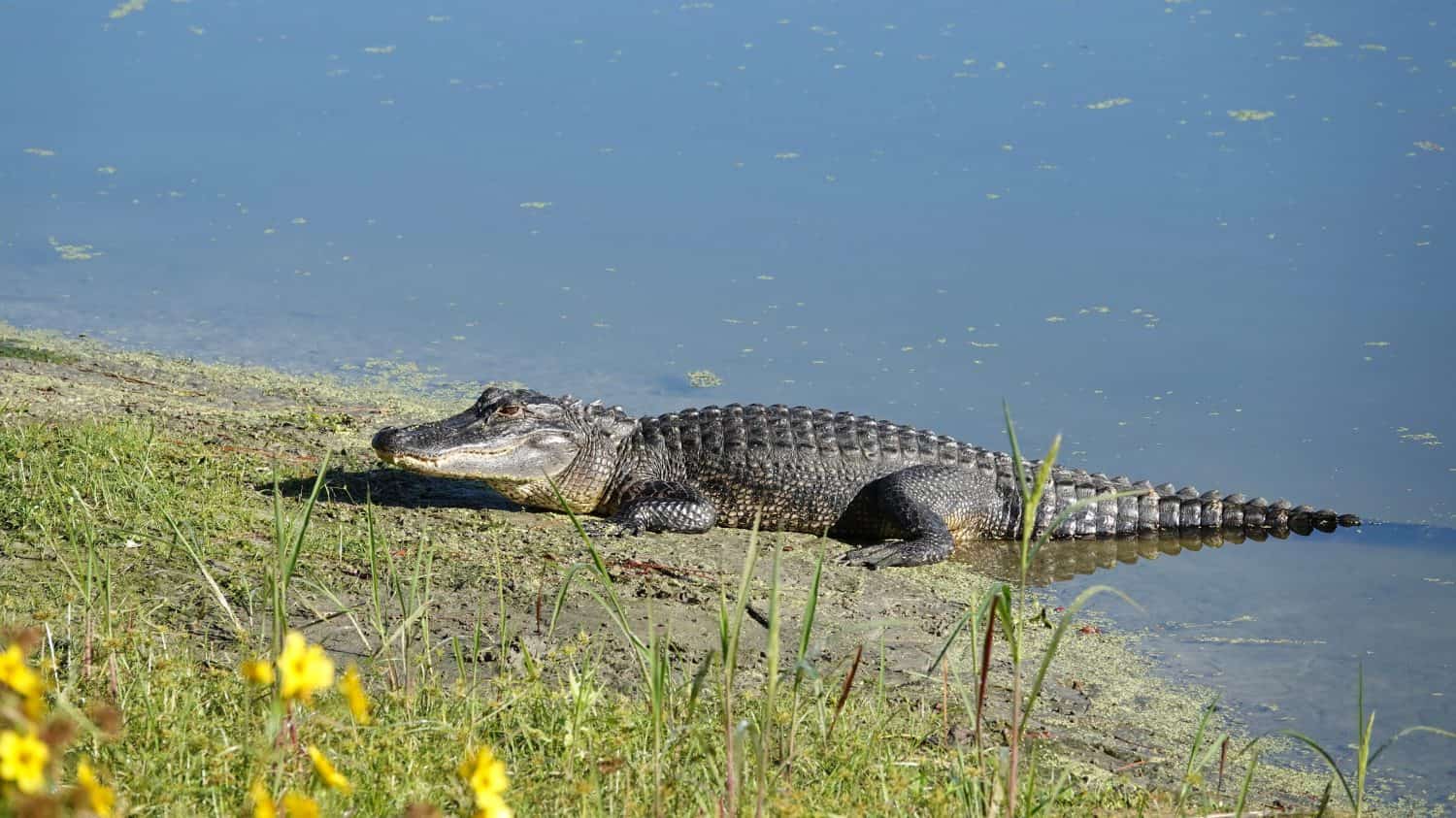
Alligators often bask in the sun along the water’s edge.
©Chris Klonowski/Shutterstock.com
With 53 acres of land, there are plenty of opportunities to spot wildlife like alligators in Jarvis Creek Park. You can explore the walking trails surrounding the 11-acre Lake Liggett or go fishing from the dock. There are also picnic areas, workout stations, and a playground for the kids to enjoy. Just remember to stay on the park’s designated paths, especially around marshy areas where alligators may be lurking.
2. Palmetto Dunes
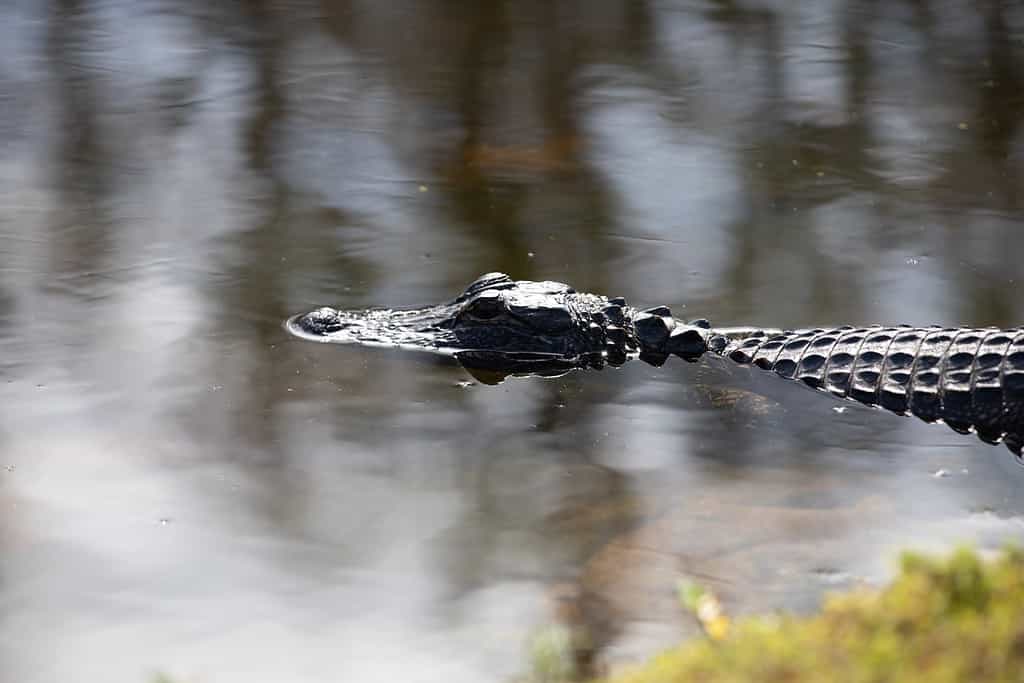
Keep your eyes peeled for alligators in the lagoons and waterways of Palmetto Dunes.
©Heather Schor/Shutterstock.com
At Palmetto Dunes, you can explore the natural beauty of Hilton Head with a beach, three golf courses, and several lagoons scattered through its 2,000 acres. You’re more likely to spot an alligator in Palmetto Dunes during the spring when they are looking for something to eat after a long cold winter in Hilton Head. In addition, April through June is alligator mating season, so you might see them cruising around a bit more.
3. Shelter Cove
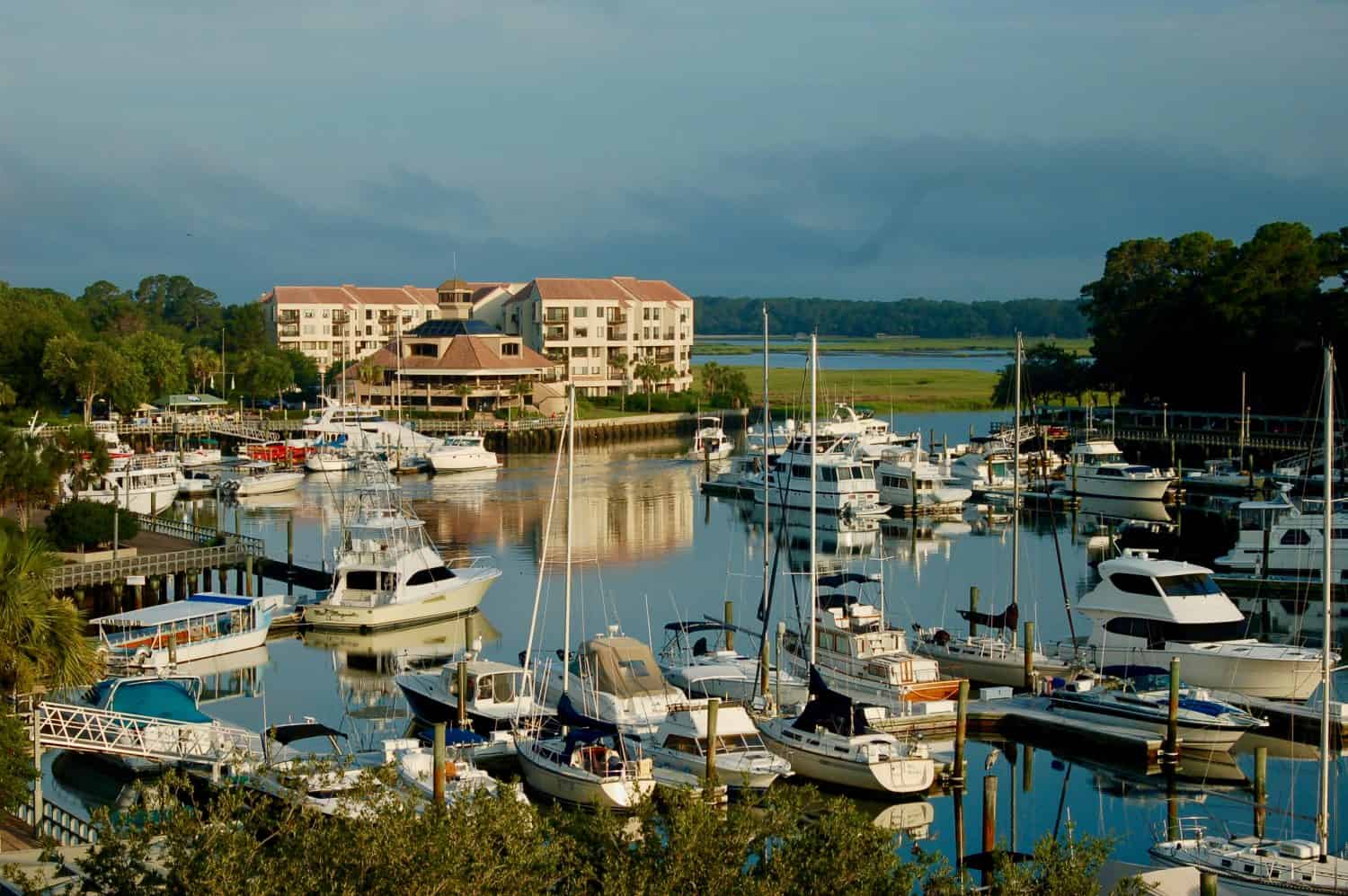
Shelter Cove has plenty of entertainment, parks, shopping, and over 285 acres of beautiful coastline.
©DennisJSchmidt/Shutterstock.com
Just across from Palmetto Dunes, you’ll find Shelter Cove, a vibrant mixture of residential neighborhoods and tourist attractions. While alligators aren’t an everyday sight, they can sometimes be spotted in freshwater areas around Shelter Cove like canals, waterways, lagoons, and ponds. In recent years, an enormous alligator affectionately named “Big Al” has been spotted in Shelter Cove.
4. Shipyard
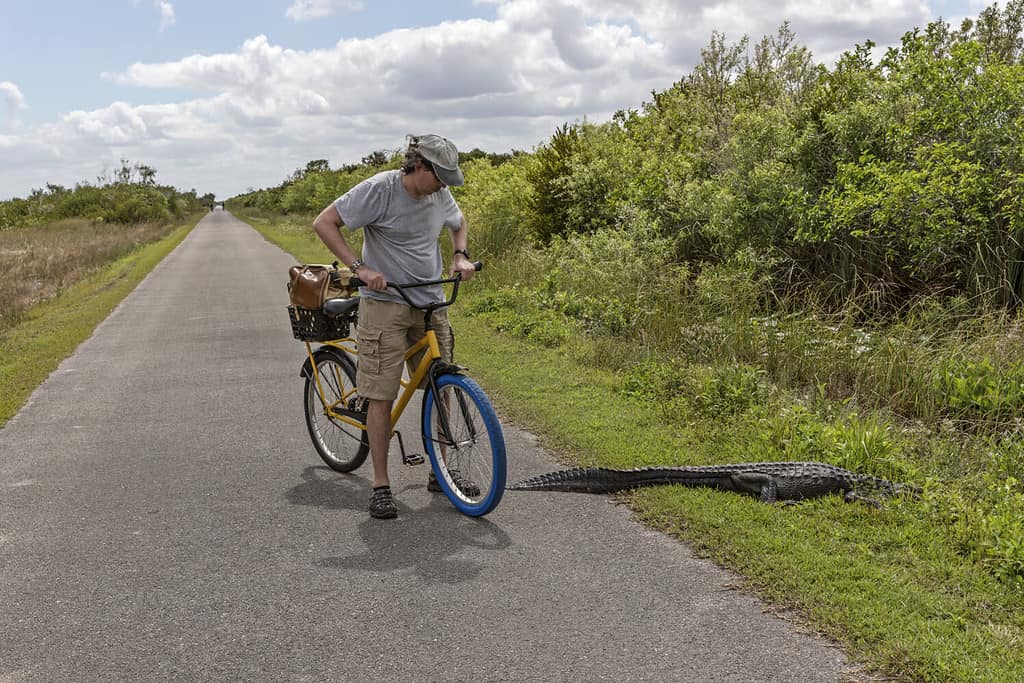
On occasion, alligators will cross the roads in Hilton Head.
©Geofox/Shutterstock.com
Located on the south end of Hilton Head Island, Shipyard is an 800-acre paradise with sparkling lagoons, beautiful coastal scenery, and private access to the stunning shorelines of Hilton Head. In addition to these luxury amenities, Shipyard is also home to American alligators, who are often spotted in and around the lagoons, coastlines, or just relaxing by the water.
5. Sea Pines
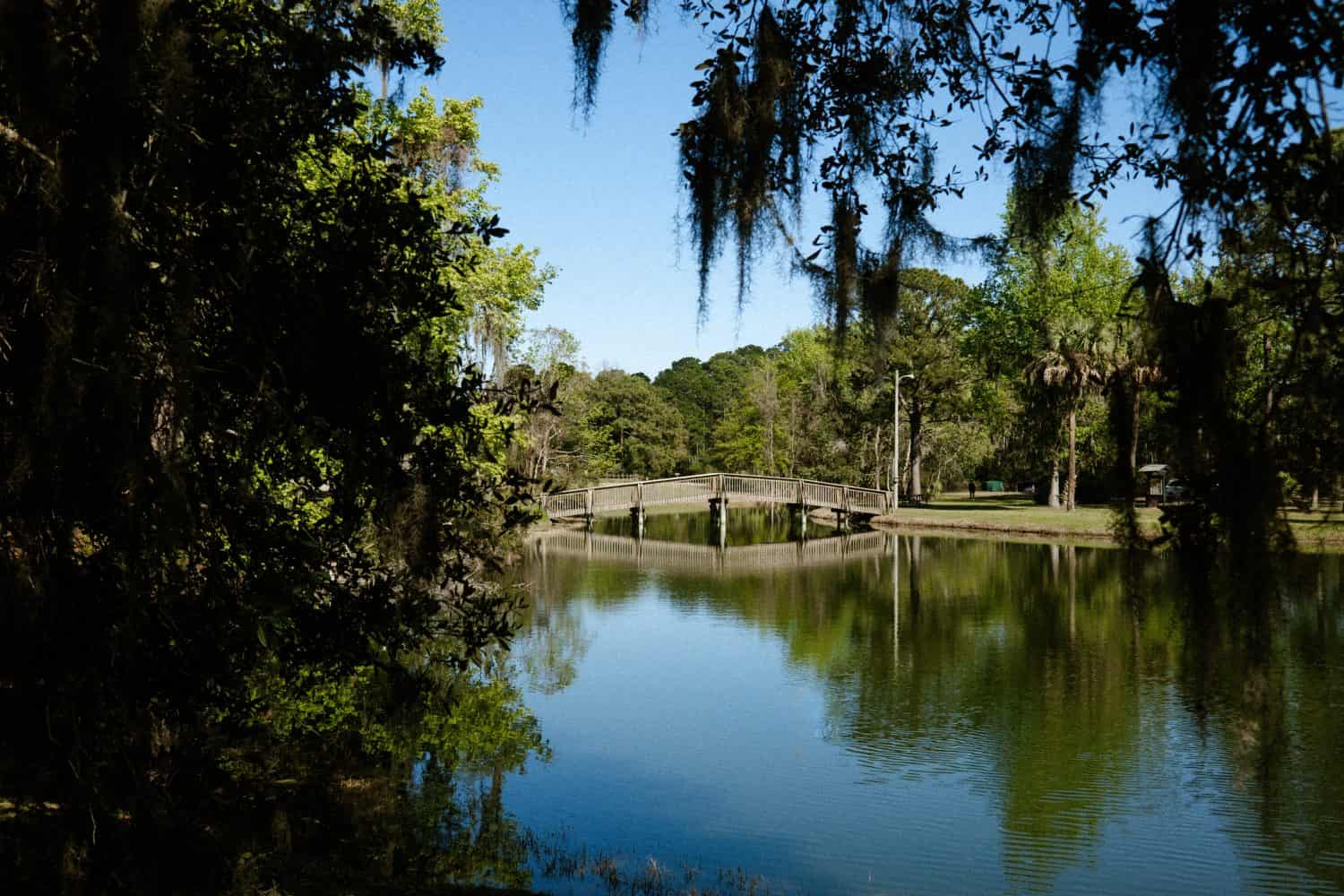
Visitors can spot alligators using a network of trails, boardwalks, and observation decks at the Sea Pines Forest Preserve.
©Jordan Huett/Shutterstock.com
The Forest Preserve at the Sea Pines Resort offers some of the best alligator-spotting opportunities in Hilton Head. Located on the tip of Hilton Head Island, the preserve offers 605 acres of forests, lakes, ponds, and wetlands filled with incredible wildlife. You can also book a wildlife boat tour to see the alligators and their other amazing neighbors up close.
6. Pickney Island
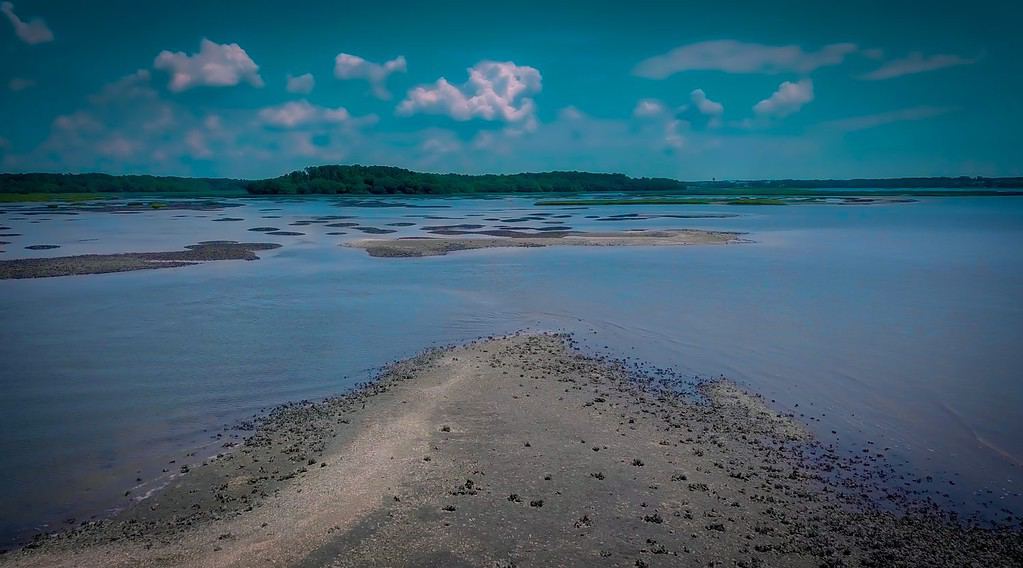
The Pickney Island National Wildlife Refuge has open fields, freshwater ponds, salt marshes, and maritime forests
©Ross The Roamer/Shutterstock.com
The Pickney Island National Wildlife Refuge is another great place to spot alligators in Hilton Head. This 4,000-acre refuge features a variety of habitats. The creeks and marshes are prime gator-spotting areas, but keep your ears peeled for other amazing animals as well. Bald eagles and other raptors, shorebirds and waterfowl, herons, egrets, and white ibises are also common residents of Pickney Island.
7. Golf Courses
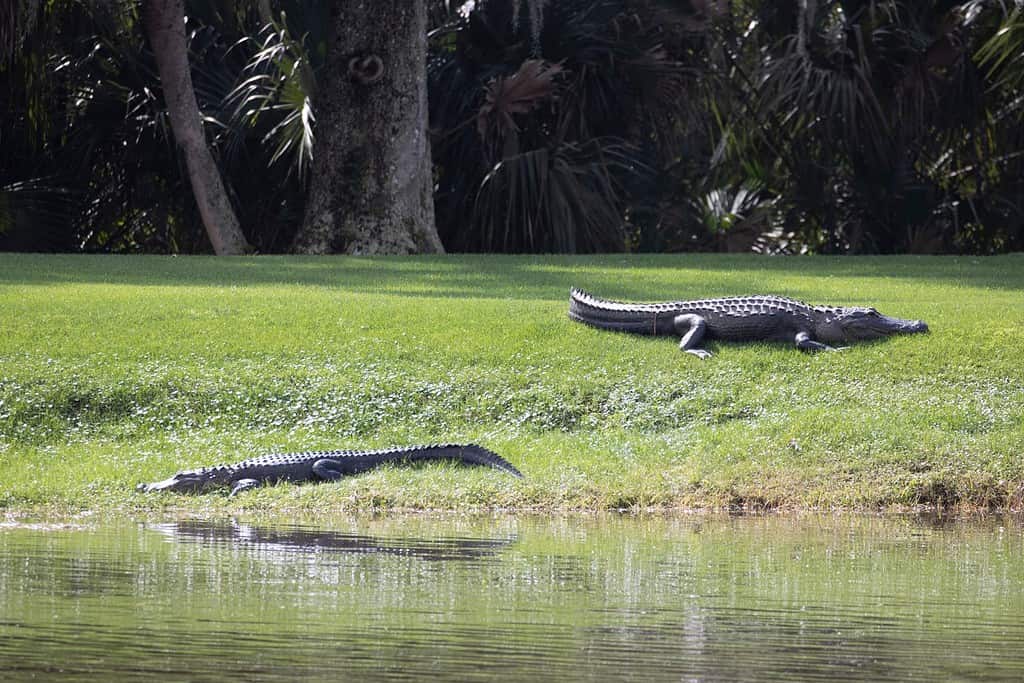
Alligators enjoy the water features of Hilton Head’s golf courses.
©Danita Delimont/Shutterstock.com
Hilton Head is home to many premier public and private golf courses. These aren’t just about the sport though — they’re also designed to showcase the island’s natural beauty. Visitors can golf alongside marshes and lagoons among the water hazards. These waterways — both natural and manmade — are also popular hangouts for American alligators!
The photo featured at the top of this post is © SeanPavonePhoto from Getty Images and Life On White/ via Canva.com
Thank you for reading! Have some feedback for us? Contact the AZ Animals editorial team.




